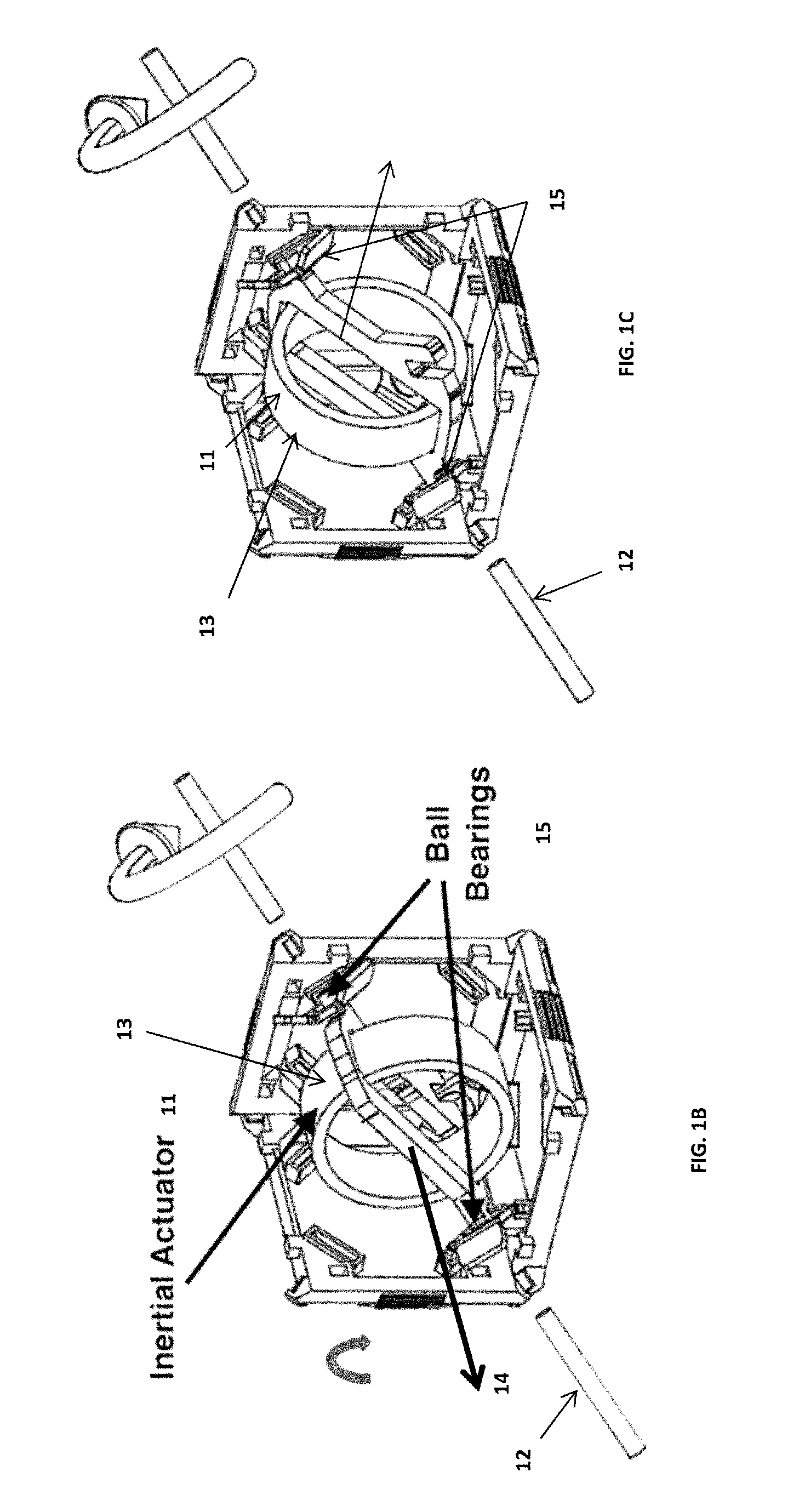Modular angular-momentum driven magnetically connected robots
a magnetically connected, module technology, applied in the field of modules, can solve the problems of inability to implement this approach in the general 3d, inability to extend any of these systems, and complex mechanical systems, and achieve the effect of robust self-reconfiguration
- Summary
- Abstract
- Description
- Claims
- Application Information
AI Technical Summary
Benefits of technology
Problems solved by technology
Method used
Image
Examples
Embodiment Construction
[0019]The inventions involves a novel self-assembling, self-reconfiguring cubic robot that uses pivoting actuation to change its intended geometry. Each individual module can pivot to move linearly on a substrate of stationary modules. The modules can use the same operation to perform convex and concave transitions to change planes. Each module can also move independently to traverse planar unstructured environments. The modules achieve these movements by quickly transferring angular moment accumulated in a flywheel to the body of the cube. The system provides a simplified realization of the modular actions required by the sliding cube model using pivoting.
[0020]The invention is most closely related to existing systems whose modules pivot about the edges they share with their neighbors. These existing pivoting systems are confined to the horizontal plane and use complex connection mechanisms and / or external actuation mechanisms to achieve reconfiguration. These prior works make no a...
PUM
 Login to View More
Login to View More Abstract
Description
Claims
Application Information
 Login to View More
Login to View More - R&D
- Intellectual Property
- Life Sciences
- Materials
- Tech Scout
- Unparalleled Data Quality
- Higher Quality Content
- 60% Fewer Hallucinations
Browse by: Latest US Patents, China's latest patents, Technical Efficacy Thesaurus, Application Domain, Technology Topic, Popular Technical Reports.
© 2025 PatSnap. All rights reserved.Legal|Privacy policy|Modern Slavery Act Transparency Statement|Sitemap|About US| Contact US: help@patsnap.com



